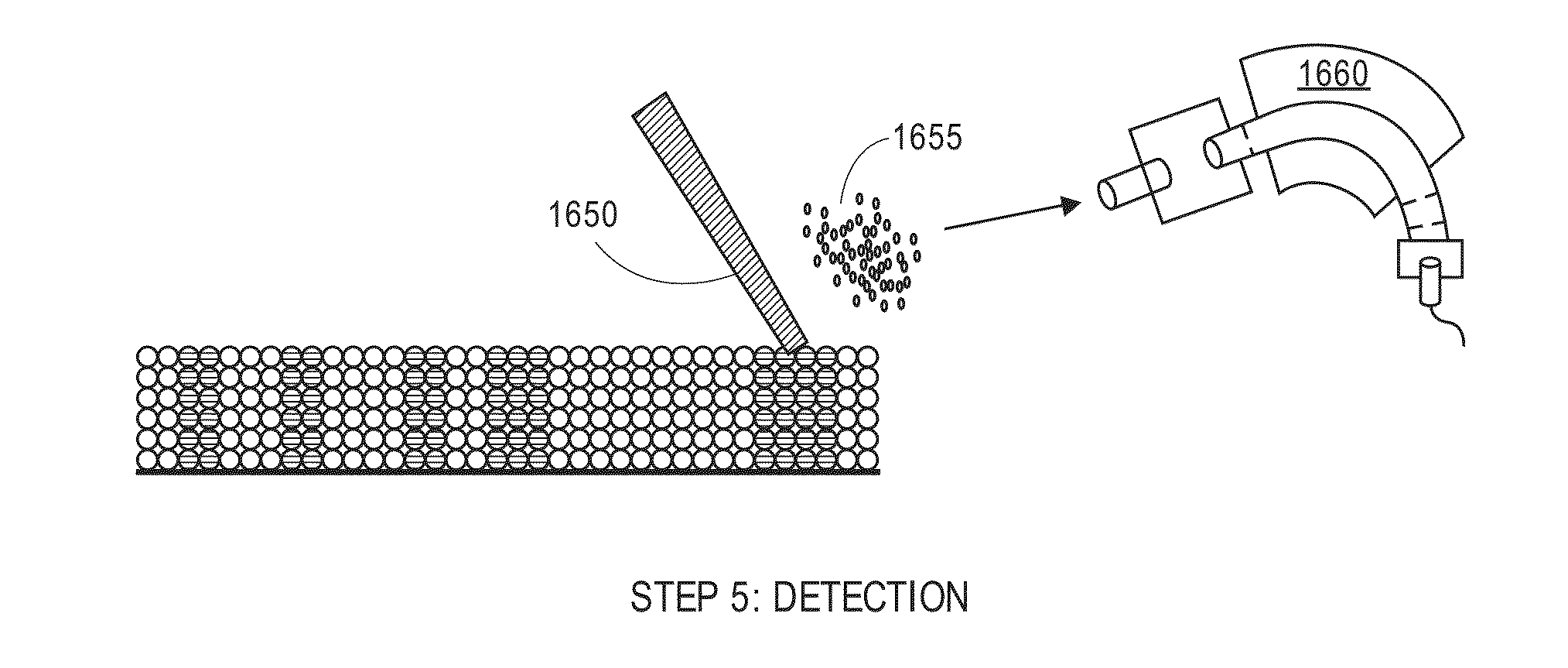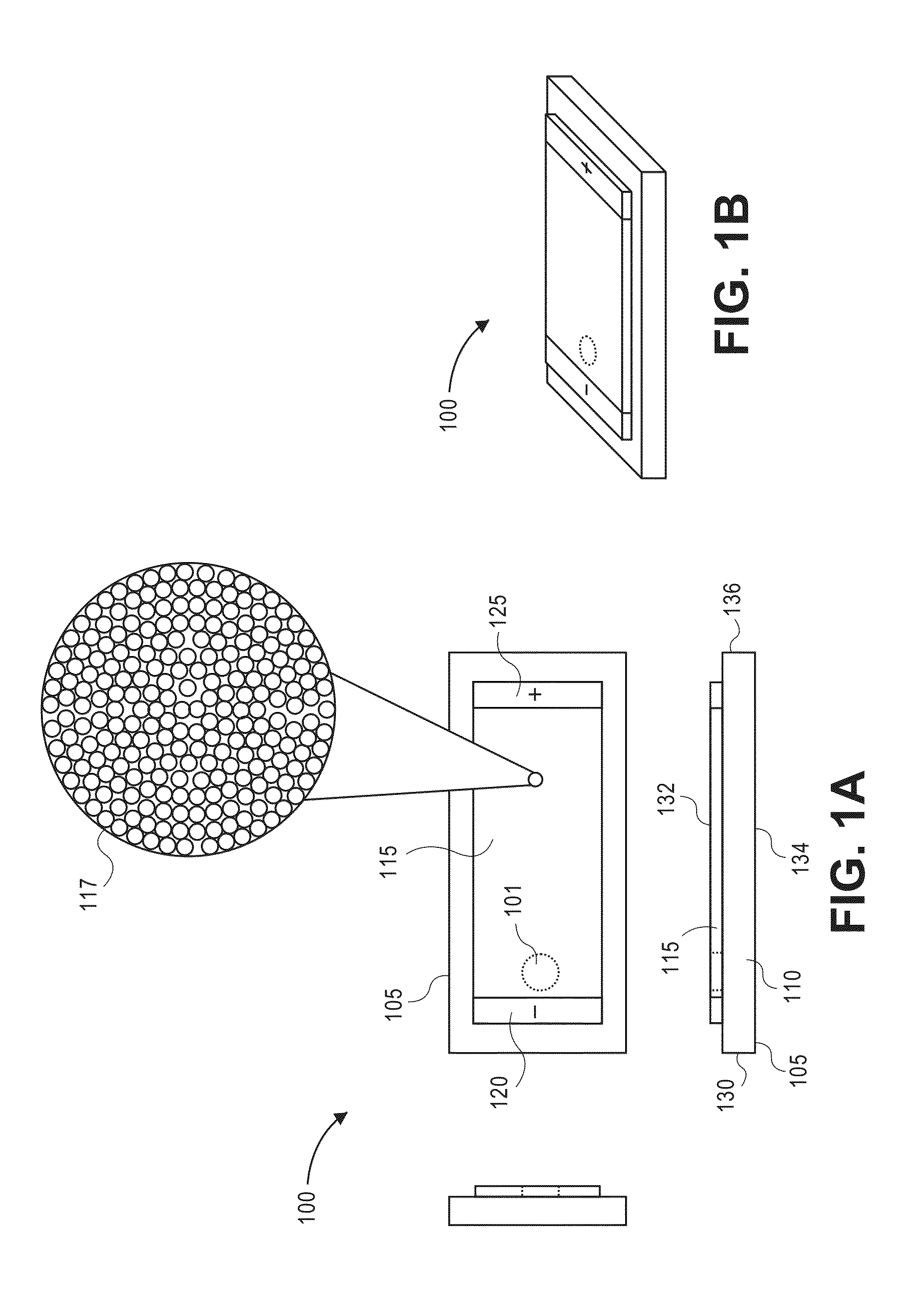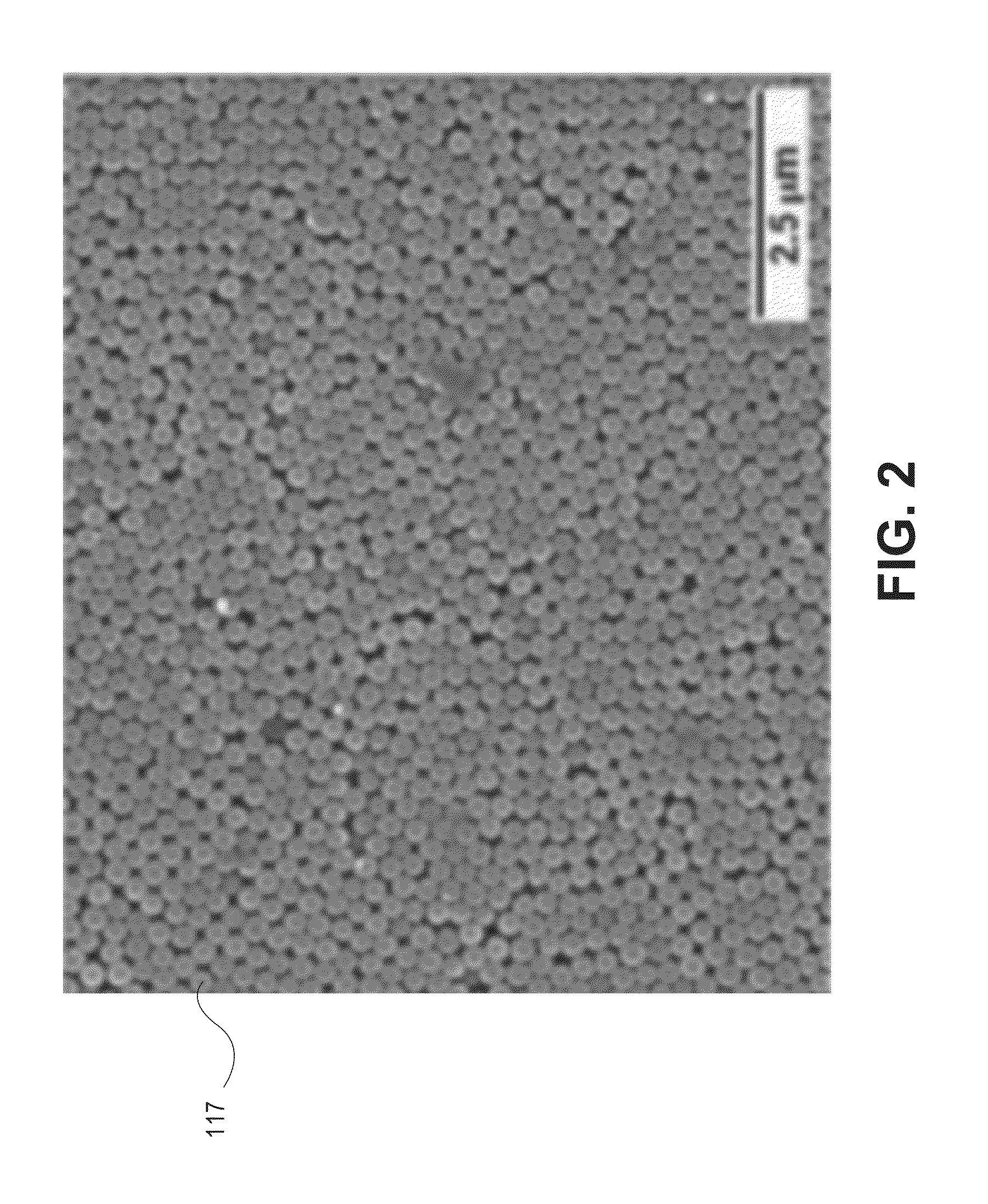Laser desorption ionization mass spectrometry using a particulate separation bed
a technology of mass spectrometry and particulate separation, which is applied in the direction of particle separator tube details, dispersed particle separation, separation processes, etc., can solve the problems of reducing separation resolution, reducing mass accuracies, and limited dynamic range, so as to improve the effectiveness of separating analytes and efficiently absorb laser energy
- Summary
- Abstract
- Description
- Claims
- Application Information
AI Technical Summary
Benefits of technology
Problems solved by technology
Method used
Image
Examples
example 1
One-Dimensional Separation and MALDI-TOF MS Analysis of a Protein Mixture
[0165]A glass slide is chemically modified with a solution of n-butyldimethylchlorosilane in anhydrous toluene under nitrogen. The slide is then rinsed with dry toluene and dried under vacuum at 80° C. A 1-mm-wide stripe of 1 cm in length is masked off on the slide and chemically etched with an ammonium bifluoride salt paste. A second, chemically-modified glass slide is used to cover the separation bed, and the assembly is secured using binder clips. A 10% w / w silica colloid is wicked into the separation bed and allowed to dry at room temperature. After drying, the cover glass slide is removed and the packed separation bed is silylated with a polymerization initiator. Linear polyacrylamide chains are grown using a complex of CuCl with tris(2-dimethylaminoethyl) amine as the catalyst; the slide is immersed in a solution of acrylamide monomer and CuCl catalyst, and the mixture is allowed to polymerize.
[0166]The s...
example 2
Two-Dimensional Separation and MALDI-TOF MS Analysis of a Protein Mixture
[0169]A pH gradient is established across a separation bed packed with silica particles (fabricated as described above) using a commercially available carrier ampholyte mixture.
[0170]Proteins (myoglobin from equine skeletal muscle, cytochrome c from bovine heart and lysozyme from chicken egg white) are dissolved in PBS and combined in an isoelectric focusing solution (8 M urea; 20 mM DTT; 0.5% Triton X-100). The concentration of each protein is about 0.05 mg / mL.
[0171]Proteins are electrokinetically loaded into the prepared separation bed under 300 V / cm for 30 s. Isoelectric focusing is conducted by ramping the voltage from 50 V / cm to 1000 V / cm over a period of time sufficient for separation of the proteins.
[0172]The separation bed is aligned with a second separation bed equilibrated with SDS running buffer (25 mM Tris; 192 mM glycine; 0.1% (w / v) SDS; pH 8.0). A voltage of 50 V / cm is applied across the aligned s...
example 3
Two-Dimensional Separation and MALDI-TOF MS Analysis of a Protein Mixture
[0174]A separation bed packed with silica particles is fabricated as described above, and a first region of the surface (i.e., a first dimension) is isolated from the rest of the crystal (i.e., a second dimension) by creating a physical gap between the two crystal areas or by using a manifold to separate the areas. A pH gradient is established across the isolated region using a commercially available carrier ampholyte mixture.
[0175]Proteins (myoglobin from equine skeletal muscle, cytochrome c from bovine heart and lysozyme from chicken egg white) are dissolved in PBS and combined in an isoelectric focusing solution (8 M urea; 20 mM DTT; 0.5% Triton X-100). The concentration of each protein is about 0.05 mg / mL.
[0176]The proteins are loaded into the first region of the surface, and isoelectric focusing is conducted by ramping the voltage from 50 V / cm to 1000 V / cm over a period of time sufficient for separation of...
PUM
 Login to View More
Login to View More Abstract
Description
Claims
Application Information
 Login to View More
Login to View More - R&D
- Intellectual Property
- Life Sciences
- Materials
- Tech Scout
- Unparalleled Data Quality
- Higher Quality Content
- 60% Fewer Hallucinations
Browse by: Latest US Patents, China's latest patents, Technical Efficacy Thesaurus, Application Domain, Technology Topic, Popular Technical Reports.
© 2025 PatSnap. All rights reserved.Legal|Privacy policy|Modern Slavery Act Transparency Statement|Sitemap|About US| Contact US: help@patsnap.com



